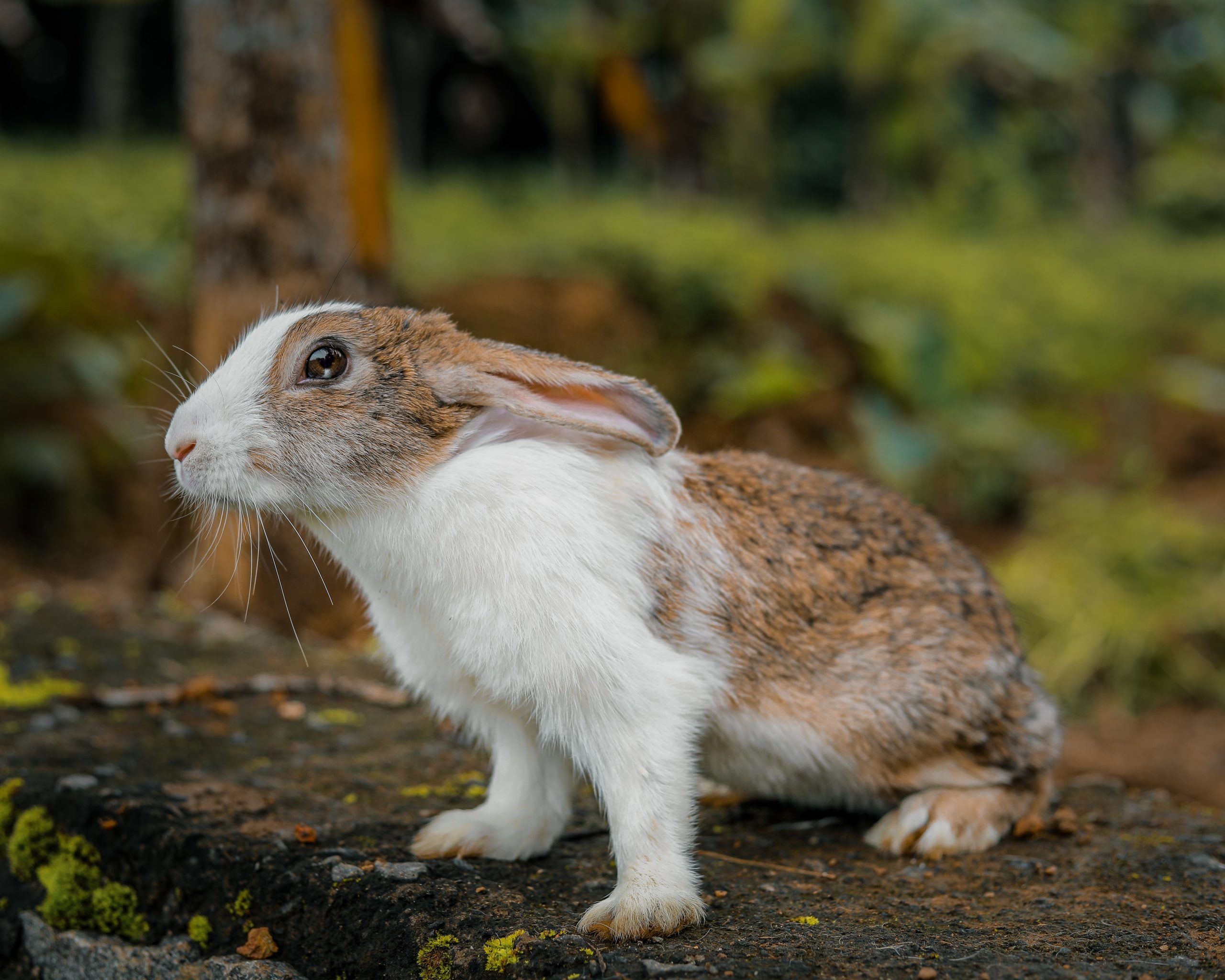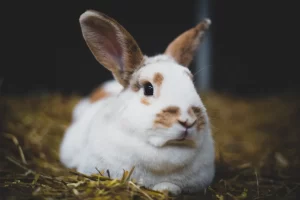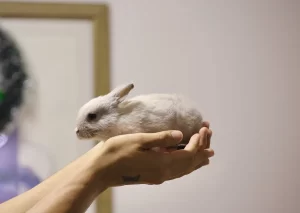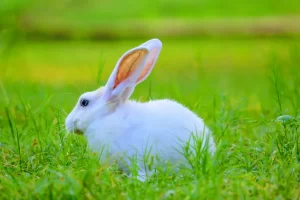Are you faced with the challenge of treating an open wound on your rabbit? Don’t worry, we’ve got you covered.
In this article, we will guide you through the steps of properly caring for your furry friend’s wound. From assessing the severity to dressing the wound, we will provide you with all the necessary information and tools to ensure a safe and speedy recovery.
So let’s get started and give your rabbit the care it deserves.
In This Article
- 1 Key Takeaways
- 2 Assessing the Severity of the Wound
- 3 Gathering Necessary Supplies for Wound Treatment
- 4 Safely Restraining the Rabbit for Treatment
- 5 Cleaning the Wound to Prevent Infection
- 6 Applying Appropriate Wound Care Products
- 7 Dressing the Wound to Promote Healing
- 8 Monitoring and Caring for the Wound During Recovery
- 9 Frequently Asked Questions
- 9.1 Can I Use Hydrogen Peroxide to Clean the Wound on My Rabbit?
- 9.2 How Often Should I Change the Dressing on the Rabbit’s Wound?
- 9.3 Can I Use an Over-The-Counter Antibiotic Cream on My Rabbit’s Wound?
- 9.4 Is It Normal for My Rabbit’s Wound to Have Some Discharge?
- 9.5 How Long Does It Typically Take for a Rabbit’s Wound to Heal?
- 10 Conclusion
Key Takeaways
- It is important to assess and clean the wound properly, looking for signs of infection and seeking veterinary assistance for deep wounds or muscle/bone exposure.
- Gather all necessary supplies and choose appropriate wound care products for effective treatment, such as antiseptic ointments or creams.
- Safely restrain the rabbit for treatment by holding it securely and using soothing techniques to keep it relaxed.
- Dress the wound using non-stick dressings like Telfa pads and sterile gauze pads to promote healing and protect the wound.
Assessing the Severity of the Wound
You should carefully examine the wound to determine the number of layers affected and the severity. Assessing wound healing is crucial in order to provide the appropriate treatment and ensure a smooth recovery process for your rabbit.
Start by gently cleaning the wound with a mild antiseptic solution. Look for signs of infection such as redness, swelling, or discharge. If the wound appears deep or if you notice any muscle or bone exposure, it’s important to seek veterinary assistance immediately.
Managing wound pain is also essential for your rabbit’s comfort. Your veterinarian may prescribe pain medication or recommend using topical creams to alleviate discomfort.
Gathering Necessary Supplies for Wound Treatment
To properly treat the wound, make sure you have all the necessary supplies and gather them in a central location.
Choosing the right wound care products is crucial for effective treatment. Understanding wound healing stages will also help you provide appropriate care.
Start by cleaning the wound with mild soap and water, or a saline solution. You’ll need sterile gauze pads to apply pressure and control bleeding.
Antiseptic ointments or creams can help prevent infection. Non-stick dressings, such as silicone or hydrogel, are ideal for covering the wound. Adhesive strips or medical tape can secure the dressing in place.
Disposable gloves are essential to maintain cleanliness and prevent cross-contamination. Remember to dispose of used supplies properly and wash your hands before and after treating the wound.
Safely Restraining the Rabbit for Treatment
When treating an open wound on a rabbit, it’s important to securely hold the rabbit by gently placing one hand under its chest and the other hand around its hindquarters. This method of restraint ensures the safety of both the rabbit and the person treating it. By holding the rabbit in this manner, you can minimize the risk of injury to yourself and prevent the rabbit from escaping.
It’s crucial to approach the rabbit calmly and use soothing techniques to keep it relaxed during the procedure. Softly speaking to the rabbit and gently stroking its fur can help to reduce stress and anxiety. Remember, rabbits are sensitive creatures, so it’s essential to handle them with care and consideration.
Cleaning the Wound to Prevent Infection
Start by washing your hands thoroughly with soap and water to minimize the risk of introducing harmful bacteria. Then, using a clean cloth or sterile gauze, gently remove any debris from the wound.
Next, pour a mild antiseptic solution onto the wound to kill any bacteria that may be present. Be sure to follow the instructions on the antiseptic solution carefully and avoid using harsh chemicals that could further irritate the wound.
After applying the solution, allow it to sit for a few minutes before gently patting the wound dry with a clean cloth. Remember, using antiseptic solutions is an effective way to prevent infection and ensure proper wound healing.
Applying Appropriate Wound Care Products
| Product | Benefits | Considerations |
|---|---|---|
| Antiseptic solution | Kills bacteria and prevents infection | May cause mild irritation |
| Antibiotic ointment | Helps fight against bacteria | Can cause allergic reactions |
| Hydrogel dressings | Promotes moist wound healing | May require frequent changing |
| Foam dressings | Absorbs excess fluid and protects the wound | Can stick to the wound and cause pain |
Dressing the Wound to Promote Healing
When it comes to treating open wounds on rabbits, there are various wound healing techniques and dressing options available.
Non-stick dressings, such as Telfa pads, are commonly used as they prevent the dressing from sticking to the wound. Additionally, sterile gauze pads can be used to cover the wound and provide protection.
Monitoring and Caring for the Wound During Recovery
- Cleanse the wound: Gently clean the wound with mild soap and lukewarm water to remove any debris or bacteria. Pat dry with a clean towel.
- Apply dressing: Use sterile gauze or adhesive bandages to cover the wound. This helps protect it from further injury, infection, and promotes a moist healing environment.
- Change dressings: Regularly change the dressings to keep the wound clean and dry. Follow the instructions provided by your healthcare professional.
Frequently Asked Questions
Can I Use Hydrogen Peroxide to Clean the Wound on My Rabbit?
Using hydrogen peroxide on a rabbit’s wound may not be safe. There are alternative wound cleaning methods for rabbits that are recommended.
How Often Should I Change the Dressing on the Rabbit’s Wound?
Can I Use an Over-The-Counter Antibiotic Cream on My Rabbit’s Wound?
You can explore over-the-counter alternatives or natural remedies for your rabbit’s wound.
Is It Normal for My Rabbit’s Wound to Have Some Discharge?
How Long Does It Typically Take for a Rabbit’s Wound to Heal?
Typically, a rabbit’s wound takes time to heal.
Conclusion
In conclusion, treating an open wound on a rabbit requires several steps.
Once the rabbit is secured, the wound should be carefully cleaned to remove any debris or bacteria.
After cleaning, appropriate wound care products should be applied to promote healing and prevent infection.
Interestingly, studies have shown that rabbits have a remarkable ability to heal wounds quickly, with some wounds closing up within a week.





